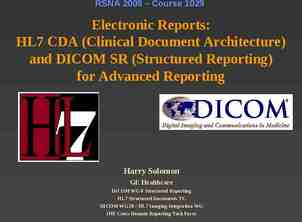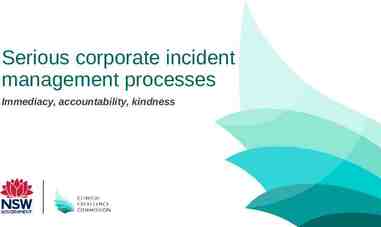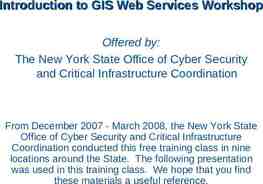Twitter Analysis for the Social Sciences and Humanities Time series
36 Slides1.79 MB

Twitter Analysis for the Social Sciences and Humanities Time series Word frequencies Sentiment analysis

Twitter Data: Quick and Slow 1. Quick: http://topsy.com search, then click Tweets per day including ‘Nobel’ 2. Slow: Download Mozdeh http://mozdeh.wlv.ac.uk, collect data in advance then analyse Tweets per hour including ‘Nobel’

Gathering Twitter data Tweets can be obtained via Mozdeh Also: Chorus http://www.chorusanalytics.co.uk/ NodeXL and other software Must be gathered in near to real time Not available after about 2 weeks Gather using keyword or phrase searches If historical tweets needed, buy from a data provider

Analysis with Mozdeh: Step by Step Download free from http://mozdeh.wlv.ac.uk for Windows

Search engine part of Mozdeh – for the saved tweets

Sentiment-based searches

Gender-based searches

Identifies words that are Relatively frequent for the query

Co-word analysis Am automatic method to compare different subsets of tweets for key differences Identifies words that are relatively frequent compared to one keyword (or gender) compared to another

The above example will compare the words in tweets containing book and read by gender

Words more common in male tweets containing “book” than in female tweets containing “book”

Words more common in ? tweets than in ? Tweets (male or female)

A statistical measure of the significance of the difference between genders Words more common in ? tweets than in ? Tweets (male or female)

Twitter research ideas Monitor keyword searches for a topic Analysis ideas Time series – identify trends & causes of any peaks Content analysis of random sample tweets – why is the topic tweeted? Gender/sentiment/high frequency keywords Network analysis of tweeters/tweeting & qualitative analysis of key tweeters – who is tweeting and who is successful?

on Twitter – Priem & Costello Example of a Twitter study using interviews and content analysis of tweets Gathered and analysed a sample of tweets sent by scholars Concluded that: “Twitter citations are also uniquely conversational, reflecting a broader discussion crossing traditional disciplinary boundaries.”

High frequency word analysis An analysis of high frequency words for Nobel prizes found tweets about: Alternative winners’ names non- academic prizes only Gender references Female winner only (9% mentioned her gender). Expressions of Sentiment literature prize only (42% positive) A quick analysis can give new insights.

Sentiment Strength Detection in the Social Web SentiStrength Detect positive and negative sentiment strength in short informal text Develop workarounds for lack of standard grammar and spelling Harness emotion expression forms unique to MySpace or CMC (e.g., :-) or haaappppyyy!!!) Classify simultaneously as positive 1-5 AND negative 1-5 sentiment Thelwall, M., Buckley, K., & Paltoglou, G. (2012). Sentiment strength detection for the social Web. Journal of the American Society for Information Science and Technology, 63(1), 163-173. helwall, M., Buckley, K., Paltoglou, G., Cai, D., & Kappas, A. (2010). Sentiment strength detection in short informal text. Journal of the American Society for Information Science and Technology, 61(12), 2544-2558.

SentiStrength Algorithm Core List of 2,489 positive and negative sentiment term stems and strengths (1 to 5), e.g. ache -2, dislike -3, hate -4, excruciating -5 encourage 2, coolest 3, lover 4 Sentiment strength is highest in sentence; or highest sentence if multiple sentences

positive, negative -2 1, -2 My legs ache. 3 You are the coolest. 3, -1 I hate Paul but encourage him.2, -4 -4 2

Extra sentiment methods spelling correction nicce - nice booster words alter strength very happy negating words flip emotions not nice repeated letters boost sentiment/ ve niiiice emoticon list :) 2 exclamation marks count as 2 unless –ve hi! repeated punctuation boosts sentiment good!!! negative emotion ignored in questions u h8 me? Sentiment idiom list shock horror -2 Online as http://sentistrength.wlv.ac.uk/

Tests against human coders Data set Positive scores correlatio n with humans Negative scores correlation with humans YouTube 0.589 0.521 MySpace 0.647 0.599 Twitter 0.541 0.499 0.567 0.541 SentiStrength Sports forum agrees with Digg.com news 0.352 0.552 humans BBC forums 0.296 0.591 as much as they 0.556 0.565 agree with each All 6 data sets other 1 is perfect agreement, 0 is random agreeme

Why the bad results for BBC? (and Digg) Irony, sarcasm and expressive language e.g., David Cameron must be very happy that I have lost my job. It is really interesting that David Cameron and most of his ministers are millionaires. Your argument is a joke.

Example – sentiment in major media events Analysis of a corpus of 1 month of English Twitter posts (35 Million, from 2.7M accounts) Automatic detection of spikes (events) Assessment of whether sentiment changes during major media events

Automatically-identified Twitter spikes Proportion of tweets mentioning keyword 9 Mar 2010 9 Feb 2010 Thelwall, M., Buckley, K., & Paltoglou, G. (2011). Sentiment in Twitter events. Journal of the American Society for Information Science and Technology, 62(2), 406-418.

matching posts 9 Feb 2010 Subj.Sentiment strength Proportion of tweets mentioning Chile Chile Date and time Increase in –ve sentiment strength 9 Feb 2010 Date and time 9 Mar 2010 Av. ve sentiment Just subj. Av. -ve sentiment Just subj. 9 Mar 2010

% matching posts #oscars Subj.Sentiment strength 9 Feb 2010 Proportion of tweets mentioning the Oscars Date and time Increase in –ve sentiment strength 9 Feb 2010 Date and time 9 Mar 2010 Av. ve sentim Just subj. Av. -ve sentime Just subj. 9 Mar 2010

Sentiment and spikes Statistical analysis of top 30 events: Strong evidence that higher volume hours have stronger negative sentiment than lower volume hours No evidence that higher volume hours have different positive sentiment strength than lower volume hours Spikes are typified by small increases in negativity

Summary Tweets gathered free with Mozdeh Search tweets and conduct content analysis Time series analysis graphs – trends over time Identify topics causing high sentiment Identify differences by gender Identify important topics by high freq. keywords Identify important topic differences by co-words Pilot test your ideas first Gather tweets in advance for a period of time Can give quick insights into your research goals – or can be a primary research method














